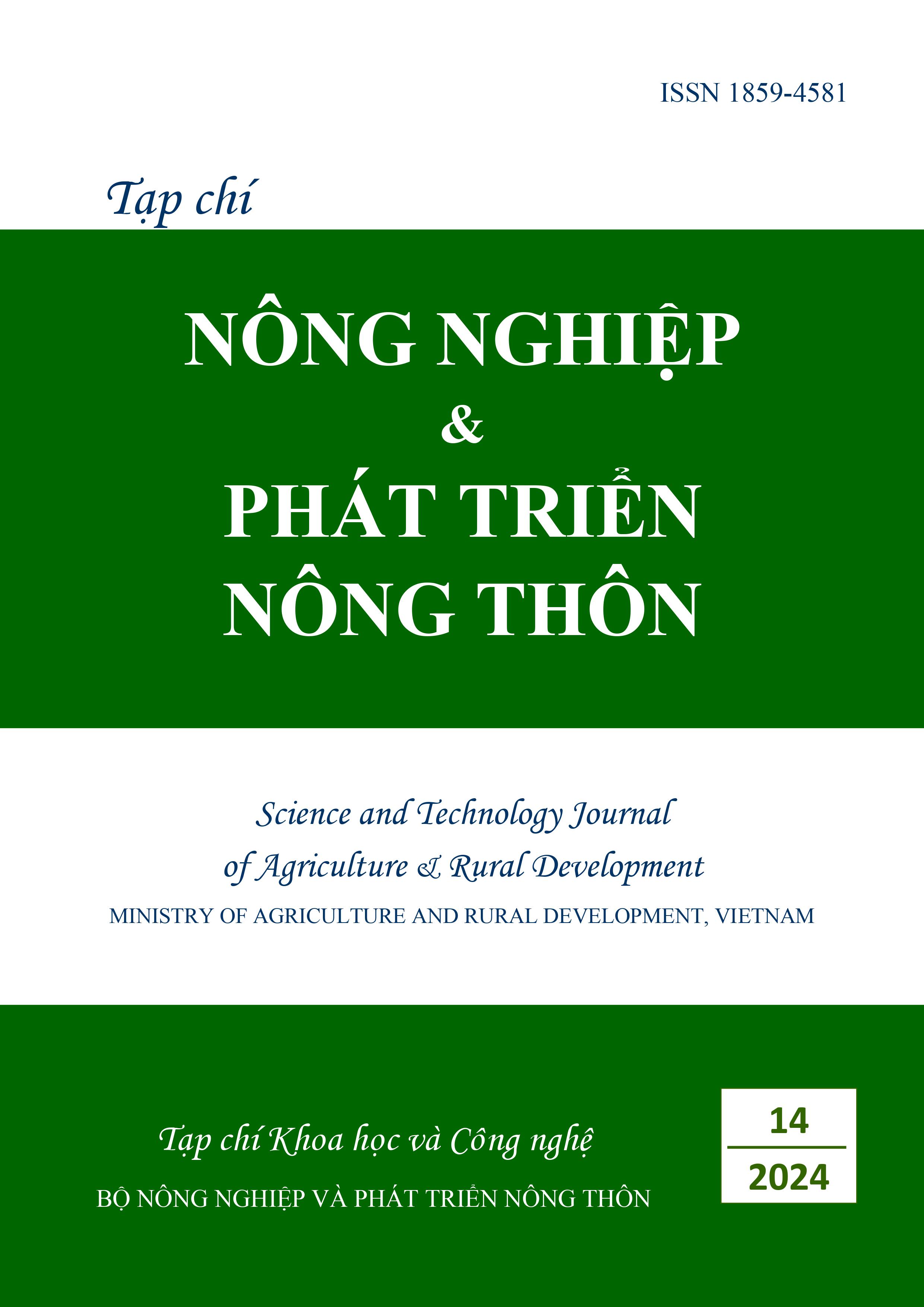STUDYING OF TRANSMISSION OF CASSAVA MOSAIC DISEASE THROUGH CUTTING MATERIAL IN THUA THIEN HUE
DOI:
https://doi.org/10.71254/qfqndd11Keywords:
Manihot esculenta Crantz, Sri Lankan Cassava Mosaic Virus, transmission, variety, yieldAbstract
Cassava is an important crop in nutrient-poor soils in Thua Thien Hue province. Cassava mosaic disease has invaded into the province since 2019. The disease caused considerable damage, however, there are not many studies of this disease. To have a basis for the integrated management of cassava mosaic disease, it is necessary to determine the mode of disease transmission through cuttings in Thua Thien Hue. Studying the spread of cassava mosaic disease through cuttings under green house showed that the KM94 sensitive variety was very high infection because farmers self-saved from cuttings. The disease developed continuously during growth stages and affected the growth and biomass yield. Studying the spread of cassava mosaic disease through cuttings in fields in Thua Thien Hue, KM94 sensitive variety was the main variety (accounting for over 95%), cassava mosaic disease was high infection from cuttings. The disease developed continuously during growth stages and affected growth and yield. The HN5 and HN3 resistant varieties grew well, but only the yield of HN5 variety was significantly higher than that of KM94 sensitive variety. The yield reduction due to cassava mosaic disease was from 30.7 - 38.1% under ecological and cultivational condition in Thua Thien Hue.






